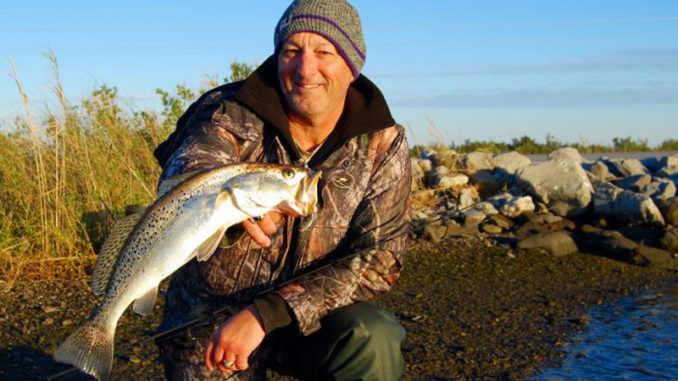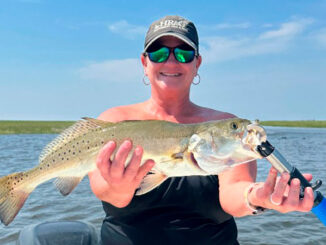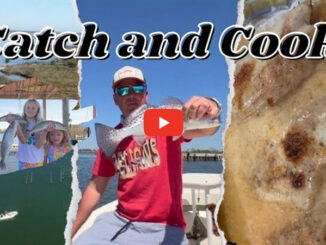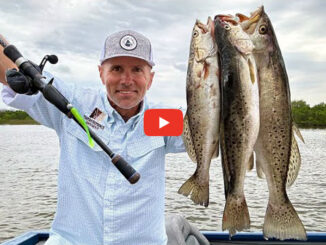
But on colder days, move to deeper roadside pits for specks
February is pretty much a mixed bag weather-wise, but whatever the conditions, you can bet Tommy Vidrine always has a plan to catch speckled trout near Grand Isle.
The bulk of the action happens along Highway 1. Vidrine, who lives in Baton Rouge but spends as much time on the island catching trout as possible, said he lets the weather conditions determine his course of action.
“When it’s pretty and maybe 70 degrees, I’m going to be hanging out at the first bridge going onto the island,” Vidrine said. “When it warms up a little, the trout are getting out of those deep holes and they go in the current. All that bait is going back into the marsh, and they follow it.
“The current comes through those bridges, so they sit there waiting for the bait to come to them.”
But if it’s cold and nasty, Vidrine switches to Plan B — and fishes deeper pits along Highway 1 like the Forbidden Hole and the Snake Pit.
“When it gets cold again, both reds and specks will go back into those deeper holes, so you get away from the bridges and find 10 or 12 feet of water,” he said. “The shallow marsh is going to get cold first, so they’re going back to those holes because it might be 10 degrees warmer down deeper. So they come back in there, along with the bait.”
Whether he’s at one of the first two bridges leading onto the island or off Highway 1 fishing deeper pits, Vidrine’s go-to lure is Tsunami’s 3-inch Swim Minnow in sea trout pattern.
“The Tsunami is the best bait – just make sure you get the Swim Minnow. The Swim Shad is heavier, and in shallow water, it sinks too fast,” Vidrine explained. “But if you’re in deeper water, the Swim Shad has a little more action because the body is flat underneath.”
At the bridges, if conditions are right, he’ll also throw a topwater lure.
“If the tide and wind aren’t too strong early, I’ll throw a topwater,” he said. “Just pick your favorite — almost any one will work.”
The key to getting bit at the bridges is current, and getting your bait to the bottom. On the first bridge leading onto the island — Vidrine’s favorite — he likes an outgoing tide and usually fishes the Gulf side of the bridge.
“The current has to be moving for it to be good there. I let the bait hit the bottom,” he said. “The trick is with good current, you have to throw into the current, which isn’t always easy to do depending on the wind, so the bait has time to sink and hit the bottom. Then just slow down and lift it and drop it.
“But if you’re throwing with the current, your bait will never get close to the bottom because the current is too strong and the bait is too light. So I like to throw it with the current coming into my face.”
If the tide is coming in on the first bridge, Vidrine usually stays on the Gulf side — but makes a shorter cast and then manually plays line out to get his lure to the bottom.
“When the current is going away from you, you don’t have to work it much,” he said. “Just bounce it off the bottom and let the current work it and get strikes.”
If he’s in the mood for a boat ride, Vidrine targets the Bay Rambo area and Palmetto Bayou northwest of Grand Isle to catch numbers of reds and smaller specks. Just plan to go on high tide, especially if you’re not familiar with the area, because of the numerous shallow oyster reefs there.
“All that marsh around Bay Rambo, just work the edges of the grass and the ponds,” he said. “You have to learn it, but it’s a great place to catch a lot of fish if you want a wintertime spot to get lots of bites.”


